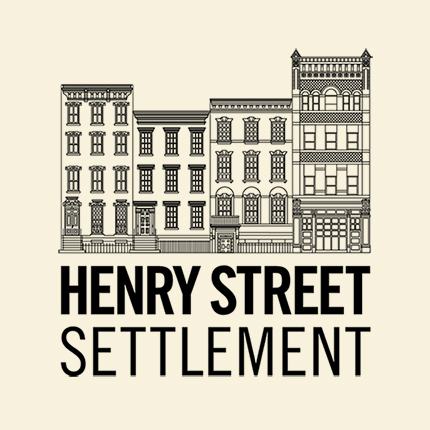From Dancer to Nursing Professor, Enid Zwirn recalls the Lifetime Influence of Henry Street
By Barbara Kancelbaum

Enid Zwirn in her nursing uniform during her time at Beth Israel Hospital School of Nursing, early 1960s.
Enid Zwirn remembers workers pouring concrete to make the sidewalks outside of the Lillian Wald Houses on Avenue D, where she and her family lived, in 1949. She saw tenements being razed to make way for more public housing; her Aunt Sadie and Uncle Joe were among the first residents of the Baruch Houses. Enid took out books from the Hamilton Fish Library—a silent space where patrons could borrow literature in Russian and Polish. Her family went to the Baruch public baths—although indoor plumbing had become widely available.
In the Wald Houses, Enid says, her neighbors consisted of Jewish immigrants as well as those from Italy, Ireland, and Poland. There were also African Americans, and the first influx of Puerto Ricans were arriving in the neighborhood. The Lower East Side was the backdrop to everything this Henry Street alumna became in the years that followed.
Born while her father was serving in World War II, Enid attended P.S. 188 on Houston Street and then Seward Park High School, graduating in 1959. But from about the age of eight, she lived another life outside of school—one that took her down Pitt Street to Henry Street’s Neighborhood Playhouse, where she took theater and dance lessons with modern dance pioneers Murray Lewis and Phyllis Lamhut, whose studios on the third floor of the playhouse faced Grand Street.
“It was a schlep,” Enid says, “but on Pitt Street, there were people selling pickles in the doorways of the tenements. Our penny loafers had actual pennies, and we’d give them to a lady stirring barrels of pickled green tomatoes or cucumbers, and we’d walk the rest of the way home sucking on pickles.”
Experiencing the Heyday of Modern Dance
At the Playhouse, students in black leotards danced barefoot in mirrored studios, and afterward they washed their feet in wide porcelain sinks. On September 26, 2024, Enid visited the arts center for the first time in decades and found it mostly unchanged.
Enid’s time at Henry Street was the heyday of modern dance, and resident choreographer Alwin Nikolais was known for his innovative costumes, often outfitting dancers in fabric, tubes, elastic strips, or other materials that augmented the human form.
“As children, we danced in stretchy elastic, with a tube on one foot,” Enid recalls. “It made you think of how you move your body when it’s restricted in a way. It wasn’t ballet.” She adds that Nikolais had a dominating presence, with his shock of white hair, straight posture, and handsome looks.
In her junior year of high school, Enid’s guidance counselor, knowing she was a strong student, asked what she was going to do for a profession. “I said I wanted to be an Egyptologist,” Enid says. The counselor replied, “You’re a poor Jewish girl from the Lower East Side. You will become an elementary school teacher, nurse, social worker, or legal secretary. Pick one.”
Enid liked science, so she chose nursing, and at 16 was accepted to the Beth Israel Hospital School of Nursing. —the apprenticeship-type learning system that 90% of nursing students enrolled in at the time. At 17—wearing a pinafore and winged cap—she was put in charge of a hospital floor serving upwards of 30 patients. Enid had to convince patient families that she was, in fact, the nurse.
“Having my drama background helped a lot!” she says. “I was scared but didn’t let it show.”
Enid Zwirn visiting The House on Henry Street exhibit at the Henry Street headquarters, October 2024.
Promoting Lillian Wald’s Ideas
Still, wanting to earn a bachelor’s degree, Enid attended NYU in the late 1960s before moving to Ann Arbor, Michigan, with her first husband. There she earned her master’s degree in public health and taught public health nursing before decamping to Indiana University, where she earned her PhD in instructional systems technology and spent most of her career as a nursing faculty member.
Throughout her career, Enid taught her students about Henry Street Settlement founder Lillian Wald, the legendary nurse after whom Enid’s childhood housing complex had been named.
“Lillian Wald made a huge contribution to what we now call the social determinants of health,” she says. “That food, housing, transportation—it all determined your health status.”
Though Wald was not an academic, Enid says, she didn’t need anyone to tell her she was a scholar. “She wrote extensively, believed in statistics, and could articulate what she saw in ways that people who had never seen the Lower East Side could empathize with.”
Over her career, Enid has witnessed miracles, she says, such as dialysis to save people with kidney failure, treatments that enable premature infants to survive, and organ transplantation. But, she’s frustrated by what she says are insufficient investments in public health.
Though health care spending is sky high in the United States, fewer than 5% of health care dollars are spent on public health. “Public health is invisible,” Enid says. “We wash our hands and trust that the water won’t make us sick.”
Enid is guided by Lillian Wald’s ethos, that when you see a patient, you also see the family and the community. “In a critical care unit, the nurse has 99% of the power,” she says. “If you’re a community health nurse, the community has the power. And your job is to be patient, because you have to get community to embrace a problem as solvable and then you have to wait for it to be chipped away at.”
With that perspective, born on the Lower East Side, Enid has infused Lillian Wald’s worldview into the practice of nursing carried out by the thousands of students she has influenced across her career.

